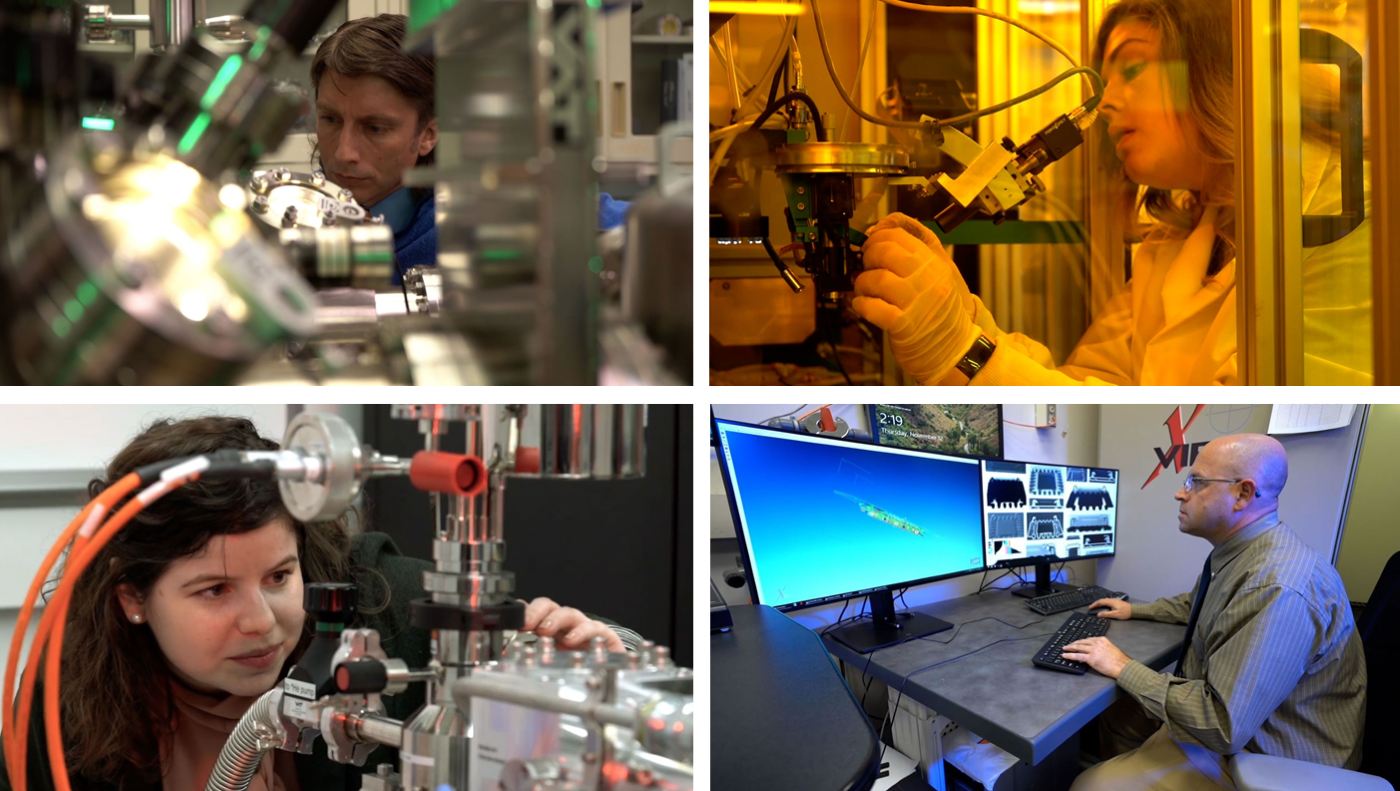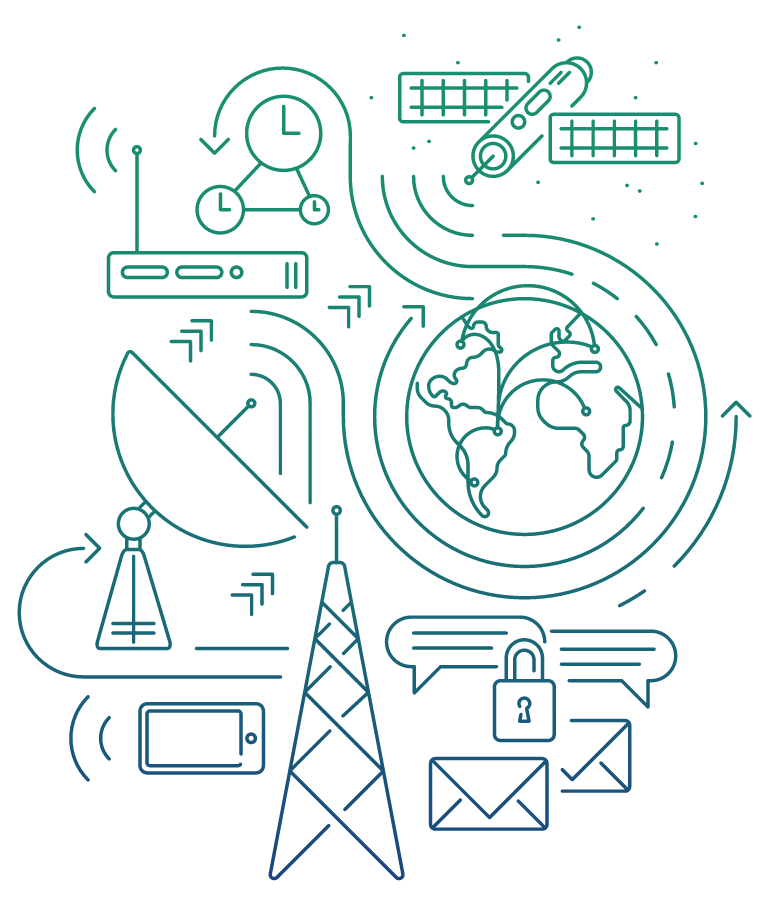Inventing the Future at NSA Labs
In a world where the words “innovative,” “cutting-edge,” or “state-of-the-art" get thrown around like so much candy at a parade, the researchers in NSA’s labs are seeking something even bolder: to invent the future. And they’re sharing their inventions with the world.
NSA scientists at work. Clockwise from upper left: Bob Butera, Alyssa Martin, Jenn DeMell, and Dan Hinkel.
From morphological text processing to electron manipulation, from advanced cybersecurity to flexible circuit fabrication, NSA’s Technology Transfer Program is using partnerships with academia, national labs, and private industry to steadily turn science fiction into straight-up science—science that’s being applied not only to keep the country safer by enabling NSA’s intelligence mission, but also to improve the lives of Americans and bolster the economy in the process.
Transitioning Technology to the World

What might surprise you is that this kind of collaboration isn’t new for the Intelligence Community. NSA’s Laboratory for Physical Science has been advancing the physics and engineering behind information science and technology in an environment where university, industry, and federal government scientists can work together on advanced communication, sensing, and computer technologies.
NSA’s collaborative research has generated an extensive portfolio of patented technologies across multiple technology areas, which the Office of Research & Technology Applications (ORTA), which manages the Technology Transfer Program, makes available for licensing.
NSA also regularly releases open-source software for use and adaptation by the public, and partners with other organizations to conduct research towards a common goal. For instance, in 2019 NSA signed an agreement with the University of Texas System to “jointly address challenges in the areas of machine learning, innovation capability development, and Internet of Things.”
NSA’s ORTA, created in 1990, is built on a federal legislation and policy framework that dates from 1980. That guiding framework enables the transfer of federal technology to the private sector to share the benefits of the national investment in research and development. This sharing can include technology, personnel, facilities, methods, expertise, and technical information in general.
Expert-Driven Success

The scientists developing these award-winning technologies come from a variety of backgrounds and scientific disciplines. Many have PhDs when they join the agency, or earn the degree while working at NSA, where lab and classroom merge. All were drawn to science from a young age, though their paths to NSA’s labs vary.
Regardless of degree or scientific discipline, they all share an almost overwhelming enthusiasm for their work. Says NSA scientist Dan Hinkel, “I have the best job in the world, the most exciting work. I get to see new things every day, I get to solve problems that other people haven’t found a way to solve yet.”
In other words, they’re out there inventing the future, one breakthrough at a time.
Read more about the NSA's Technology Transfer Program and how to partner with them on the NSA website.


